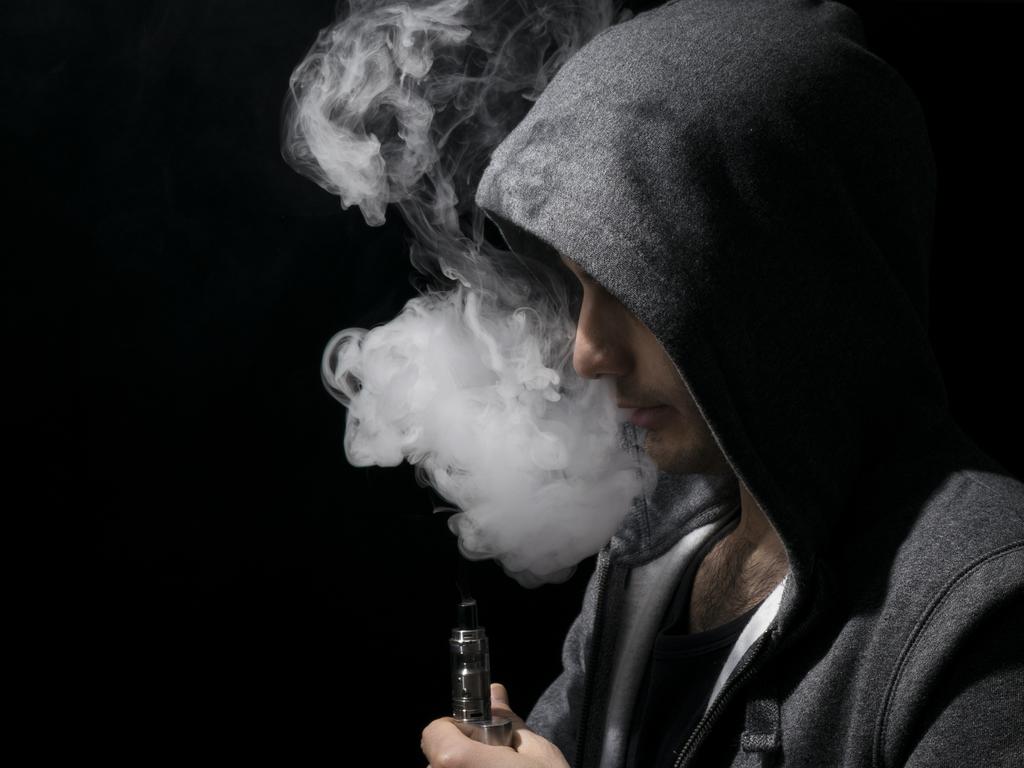‘I like the hit’: Why teens are addicted to vaping
Vapes in all colours, shapes and sizes are easily accessible via social media, leading to teens getting dangerously addicted to nicotine. This lack of regulation and thriving black market has sparked the TGA to propose a range of reforms.

Teenage vaper Sam* doesn’t care about the flavour or the packaging, it’s all about the nicotine hit.
And it’s easy for the 13-year-old to find – despite nicotine vaping products only legally available in this country by prescription for over-18s – he simply orders his supplies on Snapchat and arranges pick-up.
He tried his first vape or “stig” eight months ago at a park, casually handed over by a friend the same age.
“At the time, the first time was like nothing happened but my throat got sore,” he said.
“I was going to continue just when I felt like it, but then I got addicted.
“When I was using it I had a head spin then felt nice, felt cool and relaxed.

“(But when I wasn’t) I used to get mad, frustrated and all I could think about was how I needed to get one.”
He was spoiled for choice, with vapes in all colours, shapes and sizes easily accessible via social media, friends, even at convenience stores for those with fake IDs.
Over-the-counter sales are meant to be limited to non-nicotine vapes and strictly to adults but the majority of products contain nicotine, even if it’s not on the label – that’s how they get past customs.
Currently there’s no Therapeutic Goods Administration (TGA) approved nicotine vaping products in the Australian Register of Therapeutic Goods. Adults can legally access unapproved vapes through pharmacies or online with a script, but none of them have been assessed for safety.

It’s this lack of regulation and the thriving black market that has sparked the TGA to propose a range of reforms to stop kids accessing vapes and ensure safe, quality products for adults prescribed them as a quit smoking device.
Several hundred submissions have flooded in to the review, which looks at everything from stronger border control and minimum safety and quality standards, to plain packaging and banning certain flavours.
Some fear the flavours like strawberry watermelon, cherry pomegranate or pink lemonade will hook kids but Sam says that’s not the attraction.
“I don’t care about the flavour, not the colour but I care about the amount of nicotine in it. I know which brands have a good amount of nicotine in them,” he said.
At his worst, Sam was puffing around 20 times a day and as well as the cravings, or “feinings” when he couldn’t have a “choof”, he was also suffering a persistent, wheezy cough from his habit.
He spend his lunch money on vapes or he would exchange the contents of his lunch box for money to buy vapes. Then he got into trouble for vaping, in the toilets, at school – and his parents discovered his stash.
“I thought to myself that this wasn’t any benefit from it, no benefit, all I am doing is getting mad when I can’t have it,” he said.
So he decided to quit, with his parents supporting him to get help from leading tobacco treatment specialist and nicotine addiction expert Professor Renee Bittoun.

Professor Bittoun mostly assists adults with nicotine addiction but has also helped several teens to quit vaping. He said most would not reach out for help.
“We know more and more young people are vaping and they have no trouble accessing the products – some parents have told me vapes are even delivered to students at the school gates on order through WhatsApp,” she said.
“Adolescents are at risk of becoming addicted faster than adults, but most won’t think of reaching out for help to quit. Those who do are usually ‘weaned’ off or go ‘cold-turkey’ but some are very symptomatic and may need extra help, it’s not a one-size-fits all approach.
“There are alternatives to nicotine replacement therapy (NRT), simple activities like a quick jog around the house to increase the heart rate, which is exactly what having a vape does. Or eating some jelly beans, which raises the blood sugar like nicotine. Or self-talk therapy.”
For Sam, nicotine patches and gum don’t work, so he’s using non-nicotine vapes and self-talk to kick the habit.
“What is helping for me honestly is not the nicotine products because I think they made me go back to square one, so not completely stopping but using non-nicotine vapes was so much easier,” he said.
“Now I am telling myself that I don’t need one, talking to myself.
“I am more relaxed now than when I was doing it.”
VAPING ON THE RISE
Vaping use is on the rise in Australia. According to the Australian Institute of Health and Welfare, e-cigarette use by Australians aged 14 or older has more than doubled from 2016 to 2019 and is most common among smokers aged 18 to 24 at 19 per cent.
Today’s figure would be far higher, says Professor Bittoun, with retailers backed by tobacco companies targeting youth – most of whom would not have become smokers – with this now-popular method of nicotine delivery.
In her submission to the TGA review, Professor Bittoun calls for all vapes to be treated like other forms of NRT and made prescription-only, TGA-regulated to ensure safety and efficacy, and dispensed in a pharmacy.
Like medications, vapes should have no flavourings or pretty packaging and have the contents clearly listed on the label, while she also recommended a lower nicotine content than is currently available to reduce the risk of addiction.
“There’s not a nicotine patch addict on the planet,” Professor Bittoun said.
“What makes vapes so addictive is how speedily the drug is delivered. An IV shot of nicotine would be slower than a vape, which allows the fluxing of nicotine straight into the lungs, through to the arterial bloodstream and into the brain.
“Where a patch may take two to three hours (or more) for nicotine levels to peak and even then at a low level, a vape will take a just few minutes or less.
“Though it’s the same drug, nicotine, the faster the delivery form to the brain cells, the more addictive that form is. This makes vaping more ‘pleasurable’ than any other form of delivering nicotine to the brain and so much more addictive.”
*Not his real name.




